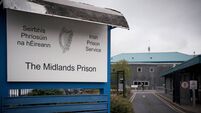Mistakes prove costly when there is little room for error
ON the face of it, Janet Donnelly did everything right. Told in 1990 that she was at above average risk of developing cervical cancer, she made sure she was tested annually and in June 1999 was given the all-clear at her regular screening.
But that advice was flawed, and as a result, the 38-year-old mother from Cabra in Dublin is dying of a condition that could easily have been treated in its early stages.
Janet, who last week settled her case against the Royal College of Surgeons for just under €500,000, is one of a growing number of Irish people prepared to bring medical practitioners to court.
There are no precise figures for cases of medical negligence in Ireland, but regional studies and investigations elsewhere suggest that up to 1,000 Irish patients die every year due to mistakes in treatment or diagnosis.
In the US, 44,000 people die annually due to errors in inpatient hospital treatment, but the number may be as high as 98,000, more than are killed by road accidents, breast cancer or Aids.
A landmark Harvard Medical Malpractice Study found that 4% of patients were unintentionally harmed by the treatment they had received. Seven percent of these patients suffered some permanent disability and of these, 14% died, in part as a result of their treatment.
An investigation conducted by the Canadian Institute for Health Information estimated that medical errors kill 24,000 Canadians a year.
A study in Australia found an adverse event rate of 16%, about half of which was considered to be preventable. A small British study indicated a 10.8% adverse event rate, again about half of these were deemed to be preventable.
While there are no nationwide statistics available here, a recent report into the Louth/Meath group of hospitals estimates that at least 10% of all admissions result in an adverse event for the patient. Among a catalogue of errors detected at Our Lady of Lourdes Hospital in Drogheda was:
Delay in diagnosis of a head injury.
Missed fracture.
Serious dose error.
Tests of two newborns with the same surname filed incorrectly.
Other studies also suggest that medical malpractice is widespread in Ireland.
Blood transfusion mistakes led to 62 life-threatening incidents in 2002, according to the National Haemovigilance Office 2003 annual report.
Of 180 reported blood transfusion errors, incorrect blood component transfused (IBCT) was responsible for 115 cases. These include transfusing the wrong blood, using improperly stored or handled blood and failure to supply CMV negative and/or irradiated blood when necessary.
In 62 cases, the mistakes were “severe”, meaning life-threatening consequences or had the potential to cause permanent injury.
Of the 115 incorrect transfusion incidents, the mistake could be traced to the hospital transfusion laboratory on 37 occasions.
There were 37 prescription mistakes, 14 sampling mistakes and 11 administrative errors.
According to NHO director Dr Emer Lawlor, doctors should expect worse consequences for mistakes in blood transfusions, including criminal cases.
“The way medicine is going now, if a doctor takes a sample from the wrong patient, and the patient is hurt as a result, [the doctor] is not just going to face civil charges,” she says.
Doctors’ illegible handwriting is another known killer, claiming more than 1,000 lives in Britain every year. While there are no figures for Ireland, the Irish College of General Practitioners (ICGP) agrees poor handwriting on prescriptions can lead to mistakes.
ICGP communications director Dr Brendan O’Shea said GPs are doing unsafe levels of work as there are not enough doctors.
“The more prescriptions you write in a day, the more unsafe the handwriting gets,” he said.
“The fundamental fact is that too few people are doing too much work with shoddy tools.”
He says computerised prescriptions make it safer for patients.
The first study to establish the level of mistakes by doctors in Ireland is being conducted by the Health Research Board. Commissioned last year by the Department of Health, researchers have begun to review case records to establish the level of medical error here.
A new system for tracking medical errors has also been put in place as part of the Clinical Indemnity Scheme, which was extended last year to cover lawsuits against consultants. Figures from July 2002 to December 2003 show that 25,760 clinical incidents were reported and 620 claims are being dealt with.
In light of the Neary affair, Ombudsman and Information Commissioner Emily O’Reilly wants clinical audits to become a regular practice in Irish hospitals.
She says Irish audit practice should mirror the practices in Boston.
“Somebody might have died in circumstances that are not normal, where a mistake has obviously been made, and the doctor talks about how he or she dealt with it, and other doctors give their views, and as a result of that, recommendations are made in relation to what should be done.
“This is done as a normal routine and an obvious part of good clinical practice. Everybody makes mistakes, and in order for everybody to learn from mistakes, and in order for future patients to benefit from that learning, this is what should happen.”
Human error in medical care is “inevitable” but to cover it up is “unjustifiable”, according to Britain’s Chief Medical Officer Liam Donaldson.
“People should be held accountable for failing to learn from mistakes,” he said.
Dr Donaldson says doctors can no longer trade off patient safety in favour of professional loyalty, or because of the fear of being sued for defamation by a colleague.
Poor hospital hygiene can also adversely affect patients. Earlier this month Health Minister Mary Harney signed up to the Global Patient Safety Challenge with Dr Donaldson, in his capacity as chair of the World Alliance for Patient Safety.
The global challenge is an initiative by the World Health Organisation (WHO) to address significant aspects of risk to patients.
The theme of the 2006 challenge is Clean Care is Safer Care, with a particular emphasis on hand hygiene.












